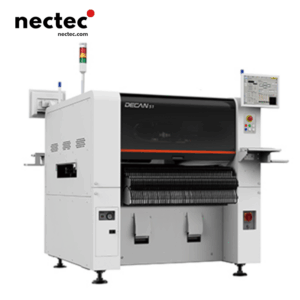In the rapidly evolving landscape of manufacturing, the advent of automation technology has brought about profound transformations. Among the most significant innovations are prototype pick and place machines, which are essential in modern production lines. These sophisticated devices not only enhance efficiency but also open new avenues for precision in manufacturing processes. In this blog post, we will explore what prototype pick and place machines are, their working mechanisms, applications across various industries, and how they are poised to shape the future of manufacturing.
Understanding Prototype Pick and Place Machines
At the core of many automated production systems lies the pick and place machine, designed primarily for the automatic placement of components onto a substrate. These machines utilize advanced robotics and machine vision to grab components from a feeder and precisely place them on a circuit board or other assembly area. Prototype pick and place machines, specifically, are tailored for short-run production and testing, enabling manufacturers to efficiently develop and iterate new products before committing to large-scale production.
How Do Pick and Place Machines Work?
The operation of pick and place machines is quite fascinating. The process begins with the machine’s integrated computer system taking the specifications of the components to be placed. Using machine vision and sophisticated imaging technology, the pick and place machine identifies the exact position and orientation of each component. Robotic arms, equipped with specialized end-effectors—grippers, suction cups, or other tools—then pick up the identified components and accurately place them onto the designated substrate.
Key Components of a Pick and Place Machine
- Vision System: A critical component that captures real-time images to guide the machine in identifying and orienting components.
- Robotic Arms: The heart of the machine responsible for picking and placing components, often equipped with interchangeable end-effectors.
- Feeder System: This component organizes and delivers components to the pick and place machine in a streamlined manner.
- Control Software: The software that orchestrates the entire process, providing the necessary instructions for operation and integration with other factory automation systems.
Applications Across Industries
Prototype pick and place machines are versatile and find significant applications across multiple industries, including:
1. Electronics Manufacturing
In the electronics industry, rapid prototyping is crucial. Pick and place machines enable manufacturers to create and test new electronic devices quickly. They are critical in assembling printed circuit boards (PCBs), ensuring that components are accurately placed to meet precise specifications. This efficiency leads to faster product development cycles and the ability to respond swiftly to market changes.
2. Automotive Industry
The automotive sector heavily relies on pick and place technology for the assembly of electronic components within vehicles. As vehicles become increasingly sophisticated, the need for rapid prototyping of various sensors, control units, and other electronic devices has grown. Pick and place machines streamline this process, resulting in enhanced productivity and reduced error rates.
3. Medical Device Manufacturing
In the medical field, the precision of assembly is vital. Prototype pick and place machines play a significant role in manufacturing medical devices, where components often require exact placements for safety and efficacy. The ability to quickly iterate and test prototypes allows for quicker innovations in the healthcare sector.
4. Consumer Goods
Consumer goods manufacturers also utilize pick and place machines to create prototypes of new products. This technology allows for versatility in design and manufacturing processes and plays a critical role in packaging and assembly lines. Products ranging from household appliances to personal care items benefit from the efficiency and accuracy provided by these machines.
Benefits of Using Prototype Pick and Place Machines
Investing in prototype pick and place machines presents numerous advantages for manufacturers:
1. Increased Efficiency
Automating the placement of components significantly increases production speed. Machines can operate continuously, and their precision minimizes handling errors, leading to higher output and efficiency.
2. Cost-Effectiveness
Although the initial investment in pick and place machines may be considerable, the long-term savings in labor costs and reduced waste make them a financially sound choice. By increasing production rates and decreasing errors, companies can realize substantial cost savings over time.
3. Enhanced Precision
Precision is essential in manufacturing, particularly in industries where small tolerances are crucial. Pick and place machines utilize advanced technologies to ensure that each component is placed accurately, which is vital for the functionality of complex assemblies.
4. Flexibility in Production
Prototype machines can quickly adapt to different product designs and specifications, enabling manufacturers to switch between projects with minimal downtime. This flexibility is essential in today’s fast-paced market where consumer demand rapidly changes.
The Future of Manufacturing with Pick and Place Machines
The future of manufacturing is set to be heavily influenced by advancements in pick and place machine technology. As developers continue to enhance artificial intelligence (AI) and machine learning capabilities, we can expect even greater levels of automation and precision. Future machines may leverage IoT (Internet of Things) technology, allowing for real-time data analysis and decision-making processes that further optimize production lines.
Furthermore, customization will play a pivotal role. As consumer preferences shift towards personalized products, pick and place machines will need to adapt quickly to various manufacturing requirements. This adaptability will be crucial in maintaining a competitive edge in the industry.
Embracing Change in Manufacturing
As we move into a new era of manufacturing, embracing automation technologies like prototype pick and place machines will be essential. Companies willing to invest in these technologies will lead the charge in innovation, efficiency, and superior product offerings. The integration of smart machines in manufacturing processes is no longer just an option; it’s quickly becoming a necessity for those looking to thrive in a competitive landscape.
The global manufacturing sector stands at a crossroads, where traditional practices must evolve to keep pace with technological advancements. By adopting and learning to operate prototype pick and place machines, manufacturers can not only enhance their production capabilities but also set the foundation for a robust, agile future.







